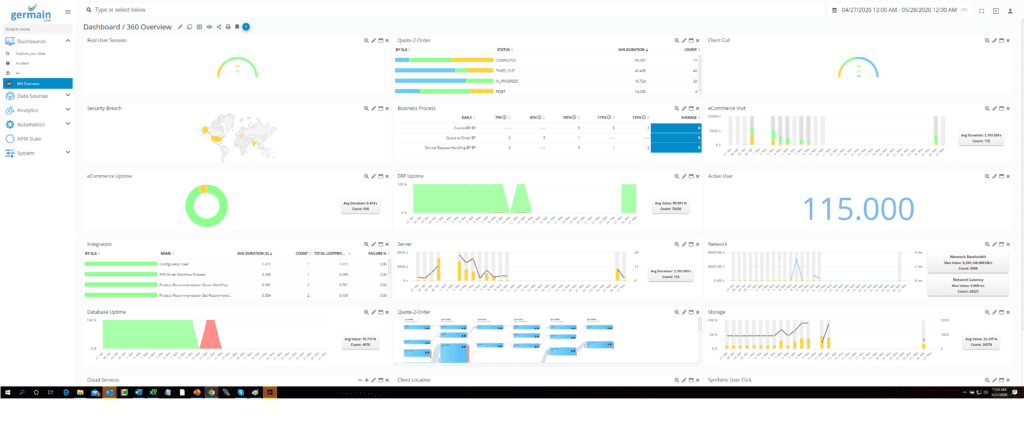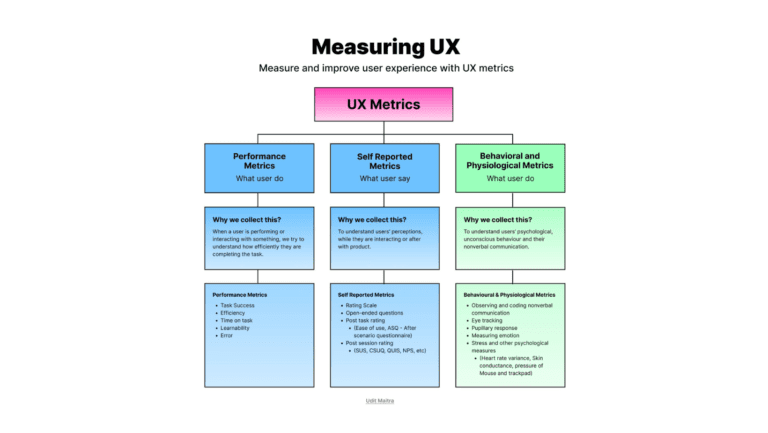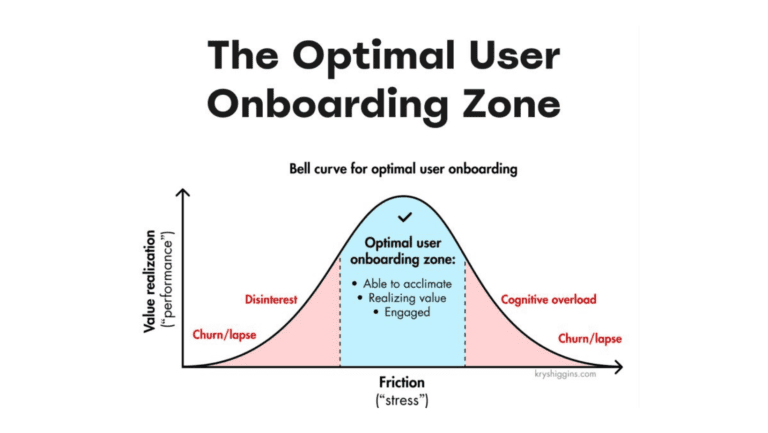These days, a new venture’s success begins and ends on customer experience. Due to a large number of similar digital products out there, end users will stop using a product immediately if the user experience is not seamless. Similarly, a mobile application delivering a substandard user experience (UX) will fall behind the competition. A good digital product can turn into a failure if it
does not work for the end user. New businesses should do everything in their power to avoid the churn rate from increasing.
In the modern tech marketplace, failure to improve these shortcomings might mean an early fall for your application. Some systems deal directly with complaints and feedback. However, the ambiguity of such organic interactions might mean you’re missing the bigger picture. CISCO Global Index estimates an almost 500% increase in cloud traffic in the last 5 years. How can one keep up? This is why, for a fast-paced turnaround and accurate troubleshooting, you need End User Experience Monitoring (EUEM).
What is End User Experience Monitoring?
End User Experience Monitoring (EUEM) software allows you to thoroughly investigate user experiences. EUEM is different from local network monitoring. Local network monitoring looks at network-centric metrics and gathers network logs. While EUEM captures and evaluates large data across the customer experience space.
End User Experience Monitoring tools can help analyze your customer’s UX journey. They can also highlight user trends and behaviors. As well as identify issues in your system from an end user’s point of view. EUEM offers a holistic view across your system infrastructure, platforms, and domains. So you can make an informed decision about your digital product. The software monitors user experiences and business operations across all devices and platforms. The objective of using EUEM is to boost efficiency and keep up with the end user’s expectations.End User Experience Monitoring tools can help analyze your customer’s UX journey. They can also highlight user trends and behaviors. As well as identify issues in your system from an end user’s point of view. EUEM offers a holistic view across your system infrastructure, platforms, and domains. So you can make an informed decision about your digital product. The software monitors user experiences and business operations across all devices and platforms. The objective of using EUEM is to boost efficiency and keep up with the end user’s expectations.
Do we really need to monitor end-user behavior?
In lieu of monitoring, one can depend on user feedback and self-reported complaints. Unfortunately, data gathered this way is hardly dependable. To start with. First of all, will every bad user interaction even get reported? Many users will immediately stop using your application and move on to a competitor’s solution. While other complaints might be too subjective in nature. So, it can take a long time and effort to correctly identify the original problem. This extra effort for a single complaint is costly. It might be too late till larger bottleneck problems get recognized. Thus monitoring tools were developed to keep up with the dynamic demands of customers across all platforms. To evaluate operational and infrastructural performance in an organized, scientific, and qualitative way.
Experience monitoring does more than just gather data for you. User experience metrics form part of key performance indicators (KPI) for enterprises and organizations to observe their progress and set concrete goals. Modern businesses manage many user monitoring technologies, each collecting massive quantities of consumer workflow data.
End User Experience Monitoring software helps identify unseen connections and synthesize disparate indicators effectively, as well as pinpoint issues related to cloud application performance and consumer device health. This will ensure user satisfaction and, in turn, maintain productive business processes. If you want to improve your application’s UX, End User Experience Monitoring can point you in the right direction.
How End User Experience Monitoring Helps Businesses
To properly appreciate the significance of user experience monitoring, we must first understand the challenges that UX professionals go through, particularly how they manage an increasingly complex application environment. IT teams are faced with an abundance of data while end users access goods and services through mobile and web applications. Thus, they need automated, powerful tools to track and monitor the customer’s journey. In addition to improving the user experience, they also help UX experts efficiently and accurately troubleshoot problems and implement solutions across diverse platforms.
End-user experience monitoring allows the:
User Support and Experience departments to improve user adoption and conversion by automatically:
Recording videos of the user sessions and every interaction that the user has with a web application including recording every click, data typing, mouse scrolling, etc.
Analyzing user’s behavior, frustration, frictions, and issues caused by poorly designed applications or failing technology.
IT department to improve user experience by automatically:
Tracing business operations across data sources and applications
Correlating user issues with technology issues and identifying the root cause of a user error. Whether it is caused by a slow JavaScript, a slow Java function, a slow integration, a slow network request, network or application crashes, or a slow database (SQL, etc.). IT teams can supervise important business transactions and respond quickly to issues relating to web application performance.
Furthermore, the auto-discovery of comparable business transactions enables IT teams to track critical user routes around the web app on a frequent basis. IT professionals can also be notified of possible issues using error verification and intelligent base lining.
Deep UX Insights
A great UX does not just relate to the good use of an application but is about an optimal business process or use case. That means the EUEM has to have the ability to monitor a use case across data sources or channels (website, CRM, CTI, email, etc.) and have the ability to identify friction and its root cause.
EUEM has to automatically analyze and provide insights on the data that it records. UX data needs to be 100% searchable (e.g., search for keywords like a Sales Order number “1-1234” or an Error Code “HTTP 404”). Whether that UX data is visible to the end-user or not. For example, your application often stores metadata within the web pages which may be critical to identify root-cause of a UX problem).
UX Insights at Scale
Last but not least, you don’t want your organization to spend a significant amount of time replaying thousands of user session videos. While trying to identify the UX issue which impacts your business the most. Therefore, the EUEM has to have the ability to analyze User Experience at scale and help your organization assess the magnitude or business impact of a UX issue.
For example, How many users lost their connection to your application over the past 24hours? How many users got “HTTP 400” Error? How man users were affected by an application crash?, etc.
Methods of End User Experience Monitoring
Proactive and Reactive monitoring are two musts. These four methods are often used in combination and define the End User Experience Monitoring Metrics:
Synthetic Transaction Monitoring: Also known as robot testing, Synthetic Transaction Monitoring (STM) mimics user behavior using predetermined scripts to analyze problems in the UX. It can help test regular user paths and identify baseline problems. However, it cannot provide organic feedback with the way actual user experiences can, so it can be fairly limited in scope.
Real User Monitoring: Real User Monitoring (RUM) captures time-based user action, click, typing, mouse moving
Business Process Monitoring: Business Process Monitoring (BPM) captures business operations not only within the application but across channels. It is about tracing a transaction across data sources, related to a business event or milestone.
Data Sources Monitoring: Data Source Monitoring captures data from all your stack. Such as logs, networks, application components, database, cloud or on-premise, desktop or mobile, etc. It then correlates that data to help connect the dots and troubleshoot a failed business operations, or user error.
What does an exhaustive UX Monitoring implementation look like?
If somebody tells you that implementing optimal UX monitoring is easy or just requires a JavaScript injection, don’t believe it, or you may just end up with partial UX insights. So partial, that very quickly you may be shopping for more, to fill in the gaps. If you are trying to improve UX at wider scale, often referred to as Customer Experience (CX), then you will need to deploy agents, engines across your infrastructure and data sources, collecting and correlating data from various channels (website, CTI, CRM, ERP, mobile, desktop, remote or not, etc).
However, if all you care about is monitoring and improving UX of your web app, then it is true that all you will need is a JavaScript injection or a Browser Extension. Some SaaS applications such as Salesforce.com don’t allow JS injection. so the only way you can monitor Salesforce.com users is by deploying a browser extension onto each user browser.
Products to Help With User Experience Monitoring
EUEM products like Germain UX, allow for monitoring the user experience and entire business processes. This includes the processes run by customers like booking a flight, to internal activities like your Salesforce monitoring.
Germain UX is a cloud-based and on-premise solution designed to help businesses in industries including finance, healthcare, media, retail, and more.
Want to learn more about Germain UX? Schedule a free demo today.
Data Transmission and Compliance
Data privacy and compliance is critical to every business. GDPR, SOC2 or equivalent are a must-support by the EUEM software but not every EUEM software supports these. Once you have selected an EUEM tool that supports these regulations, the EUEM vendor needs to help your organization ensure proper implementation.
If your EUEM tool is good, it will give you the option to gather sensitive data. Visibility or responsibility should also be configurable so you can define which team has access to which data. Your organization needs to properly define the metrics that can be collected (or not) and whether these metrics have to be anonymized. Then for the collected metrics, your organization has to define which teams or individuals may have visibility to it. Obviously, that means that your EUEM has to be able to support all this and offer different features to help accomplish that.
In a Nutshell
End user experience monitoring expands on the fundamentals of digital experience monitoring by concentrating on user engagement. In addition, it may also use metrics like sentiment collection, scoring, AI-powered analytics, and automated interventions to better analyze the UX process. It combines technical data with user feedback to give a comprehensive picture and impartial assessment across all resources.
The flexibility of end user experience monitoring makes it easily adaptable to new ways of work which makes for a better visibility model. If your company is looking for a holistic, all-encompassing way of analyzing your UX that will help better your business, you need Germain UX for your End User Experience Monitoring.






